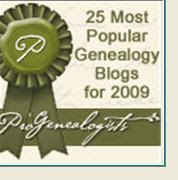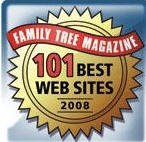Two major points: Beginning Monday, December 3, survivors may begin to submit requests for information here, and the collection will become accessible in January 2008. For updates concerning the collection and its availability, click here.
The complete statement:
Museum Aims to Make Massive Collection Accessible in January 2008
WASHINGTON, D.C. – All 11 countries overseeing the International Tracing Service (ITS) archive located in Bad Arolsen, Germany, have ratified the agreement that officially opens the massive Holocaust archive. This marks the conclusion of a long diplomatic process led by the United States Holocaust Memorial Museum to open this archive to help survivors and their families obtain information about their loved ones.
The Museum, the American repository for the archive, is in the process of receiving a complete digital copy of the archive and is working to make the documentation accessible in January 2008, so that it can begin responding to survivor requests for information. The archive is being transferred in installments, and the Museum expects to have a complete copy of the material by 2010.
"This is a significant milestone in the long process of helping Holocaust survivors finally learn the fates of their loved ones," says Museum Director Sara J. Bloomfield. "The Museum undertook this enormous task on behalf of survivors and their families, and we are committed to quickly getting them this long overdue information."
The ITS archive contains more than 100 million images of material relating to the fates of approximately 17.5 million people - both Jews and non-Jews - who perished in the Holocaust or who otherwise fell victim to the Nazi regime. In August 2007, the Museum received the first installment of material, containing 18 million images of arrest, camp, prison, ghetto and transport records, and the Central Name Index (the primary finding aid for the collection) arrived in November. The remainder of the collection, relating to slave labor and displaced persons camps, will be transferred in installments between 2008 and 2010.
The Museum is investing in the hardware, software and personnel to make this mass of electronic documentation - in more than 25 languages, much of it hand-written—accessible. In addition to building new systems to access the collection, Museum staff members have received weeks of intensive training at the ITS facility in Germany to familiarize themselves with the collection.
The Museum will announce through its Web site and the media when it can begin responding to survivor requests for information. Beginning Monday, December 3, survivors can submit requests to the Museum via the Museum’s Web site, or by calling the Benjamin and Vladka Meed Registry of Holocaust Survivors toll-free at 866-912-4385 .
Together with ITS, the Museum has created an inventory of the more than 21,000 separate collections of material that are contained in the ITS archive. The inventory provides brief descriptions of the collections at ITS that will help users understand the kinds of records that are—and are not—contained in the archive. It does not list the names of individuals found in the archive, nor can it access individual documents in the collection.
For more information, click here.





































No comments:
Post a Comment